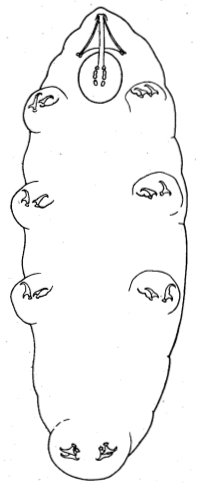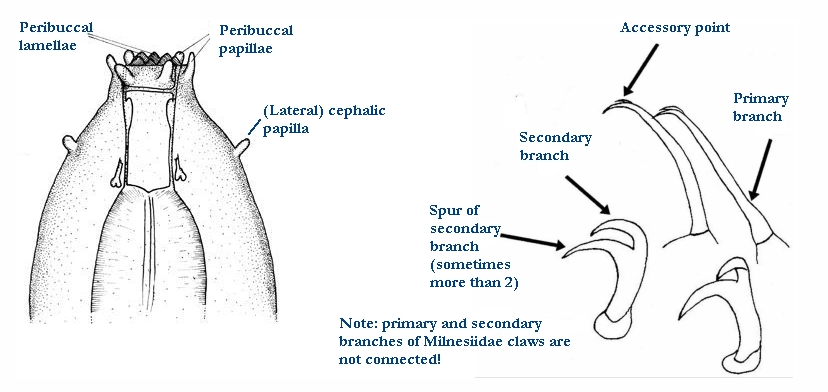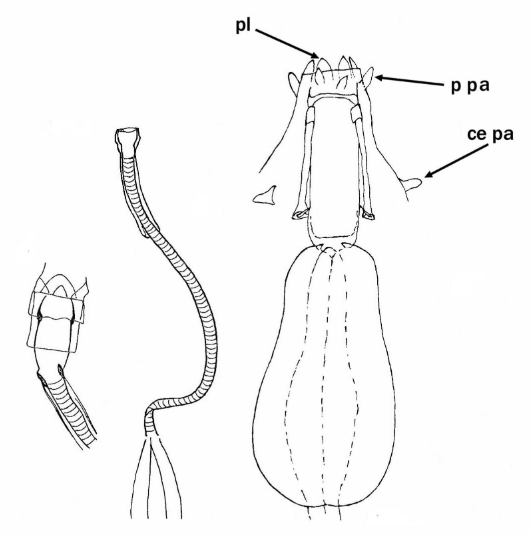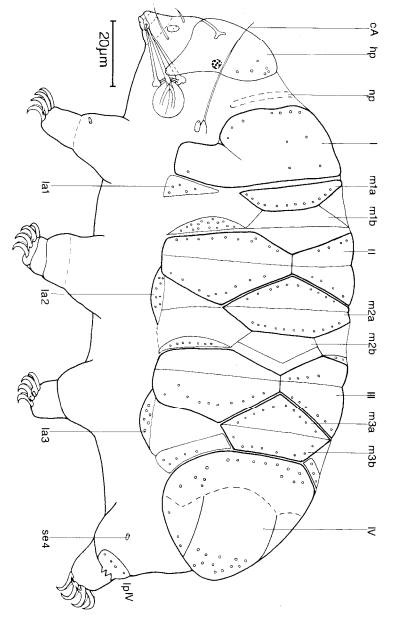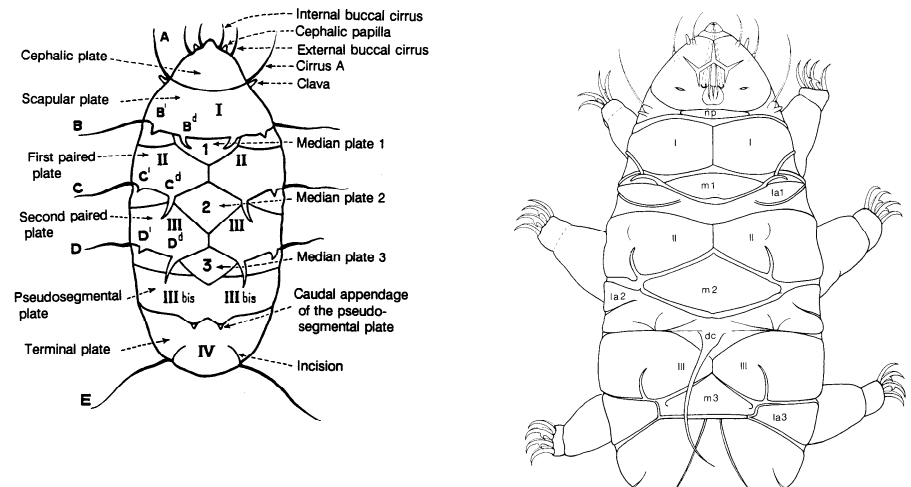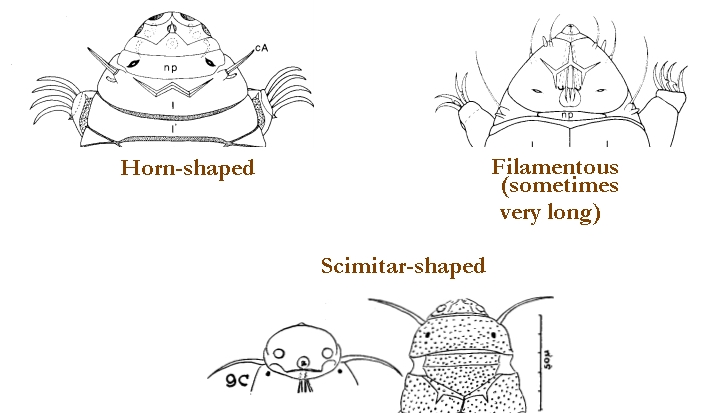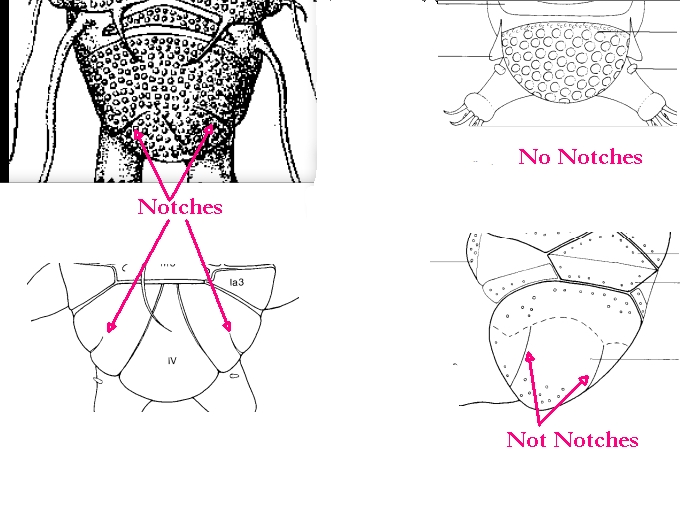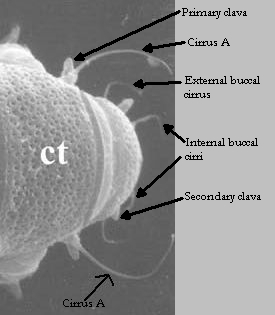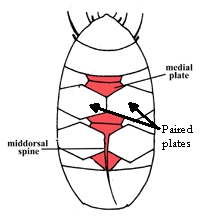Isohypsibioidea from Marley et al. 2011: “Parachela. Claws asymmetrical (2121); Isohypsibius-type claw pairs; AISM ridged.”
Isohypsibioidea from Bertolani et al. 2014: “Double claws asymmetrical with respect to the median plane of the leg (2121), normally with similar shape and size on each leg; double claws of the Isohypsibius type (secondary branch of the external claw inserted perpendicularly on the claw basal tract), or reduced from it: Hexapodibius type (very short, without common basal tract, with a base as large as the sum of the primary and secondary branch widths, and with an evident suture between primary and secondary branch); Haplomacrobiotus type (one branch only); completely absent (Apodibius). Buccal tube completely rigid (apart Paradiphascon; see below) and often relatively large, without (Dastychius, Eremobiotus, Halobiotus, Isohypsibius, Paradiphascon, Pseudobiotus, Thulinius) or with (Apodibius, Doryphoribius, Haplomacrobiotus, Haplohexapodibius, Hexapodibius, Parhexapodibius) ventral lamina. Eggs with smooth shell laid within the exuvium.”
Isohypsibiidae from Marley et al. 2011: “Isohypsibioidea. Claw pairs of similar size and shape. External and internal claws exhibiting articulation (the basal section and secondary branch form a solid unit while the primary branch and secondary branch articulate). Claws Isohypsibius-type, forming a right-angle between basal section and secondary branch. AISM ridge-like.”
Genus description from Biserov 1992: “Six peribuccal papulae and six peribuccal lobes present; buccal lamellae absent. Bucco-pharyngeal apparatus of Isohypsibius type. The first three pairs of legs with two double claws of similar size, Isohypsibius type but with very wide (about 180°) angle between the primary and secondary branches, at any rate in internal claws.
The fourth pair of legs with two double claws of similar size and shape but significantly different from those of legs I-III. These claws are not connected; with dentate lunules; the basal part of the claws is large, their length is larger than that of branches. The primary branches of claws are slightly bigger than the secondary ones with an angle of about 180° between the primary and secondary branches, the latter being arranged nearly perpendicular to the basal pan. Sequence of branches 2-1-2-1.
Smooth eggs deposited in cuticle.
Remarks: The presence of six peribuccal papulae and modified claws of the fourth pair of legs distinguishes Eremobiotus from Isobypsibius.”
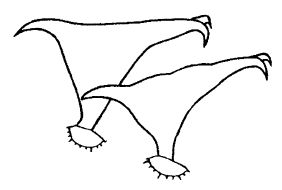

Citations :
“Parts” images Pilato G, Binda MG. 2010. Definition of families, subfamilies, genera, and subgenera of the Eutardigrada, and keys to their identification. Zootaxa. 2404: 1-54.
Bertolani R, Guidetti R, Marchioro T, Altiero T, Rebecchi L, Cesari M. 2014. Phyloeny of Eutardigrada: New molecular data and their morphological support lead to the identification of new evolutionary lineages. Molecular Phylogenetics and Evolution. 76: 110-126.
Biserov VI. 1992. A new genus and three new species of tardigrades (Tardigrada: Eutardigrada) from the USSR. Italian Journal of Zoology. 59 (1): 95 — 103.
Marley NJ, McInnes SJ, Sands CJ. 2011. Phylum Tardigrada: A re-evaluation of the Parachela. Zootaxa. 2819: 51-64.
